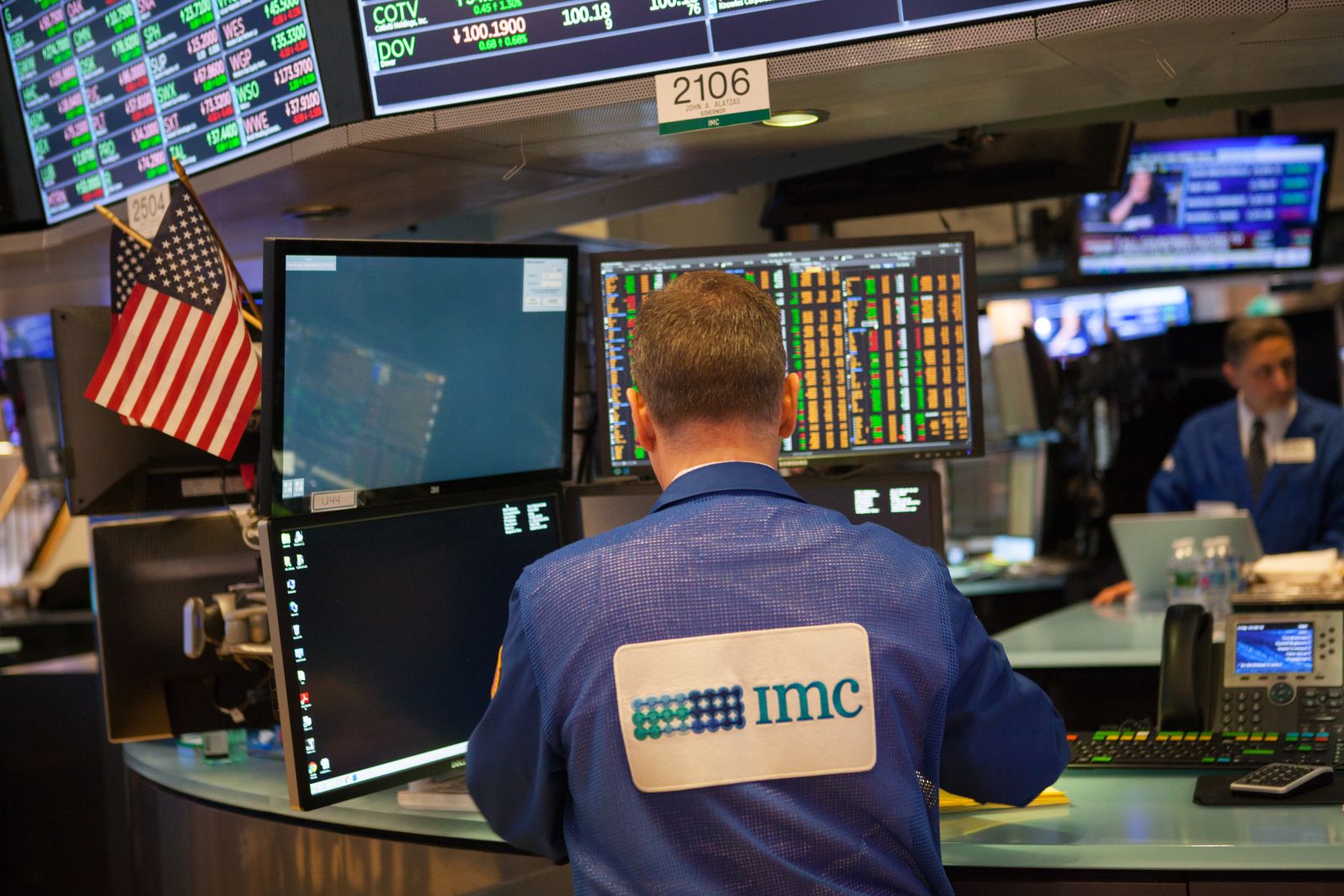Its smart to seek income from your investments -- whether it's because you need that income to support yourself in retirement, or whether you want to use it to invest in more stocks. It's also a fine idea to seek that passive income from exchange-traded funds (ETFs) that are focused on dividend-paying shares.

Image source: Getty Images.
Where to invest $1,000 right now? Our analyst team just revealed what they believe are the 10 best stocks to buy right now. See the 10 stocks »
The average annual returns, from a Hartford Funds report, can help you see why you might want to be a dividend investor:
Dividend-Paying Status |
Average Annual Total Return, 1973-2023 |
|---|---|
Dividend growers and initiators |
10.19% |
Dividend payers |
9.17% |
No change in dividend policy |
6.74% |
Dividend non-payers |
4.27% |
Dividend shrinkers and eliminators |
(0.63%) |
Equal-weighted S&P 500 index |
7.72% |
Data source: Ned Davis Research and Hartford Funds.
So, which dividend ETFs should you consider? Here are a few solid contenders:
ETF |
Recent Yield |
Five-Year Avg. Annual Return |
10-Year Avg. Annual Return |
|---|---|---|---|
SPDR Portfolio S&P 500 High Dividend ETF (NYSEMKT:SPYD) |
4.45% |
7.19% |
N/A |
Schwab U.S. Dividend Equity ETF (NYSEMKT:SCHD) |
3.80% |
11.25% |
11.09% |
iShares Core Dividend Growth ETF (NYSEMKT:DGRO) |
2.19% |
10.59% |
11.42% |
Vanguard Dividend Appreciation ETF (NYSEMKT:VIG) |
1.69% |
11.54% |
11.42% |
Vanguard S&P 500 ETF (NYSEMKT:VOO) |
1.22% |
14.70% |
13.19% |
Data source: Morningstar.com, as of Jan. 3, 2025.
I included a basic S&P 500 index fund as well, at the bottom, so you can compare. An S&P 500 index fund is also a dividend fund, to some degree, as many of its 500 component companies are dividend payers.
You'll see that, to some extent, there's a trade-off between dividend yields and fund performances. Chasing fat yields might leave you with a slower-growing investment. A key, then, is seeking fast-growing dividends, and that's what some of these ETFs do.
The Vanguard Dividend Appreciation ETF
A solid choice for a dividend investor is the Vanguard Dividend Appreciation ETF. It tracks the S&P U.S. Growers Index, which is focused on companies that have increased their dividend payouts for at least 10 consecutive years. It also excludes stocks with very steep yields, as a high yield can be due to a depressed stock price and a struggling company. The ETF recently held about 338 different stocks. Here are its recent top holdings:
Stock |
Percent of ETF |
|---|---|
Apple |
4.76% |
Broadcom |
3.87% |
JPMorgan Chase |
3.65% |
Microsoft |
3.61% |
UnitedHealth Group |
2.90% |
ExxonMobil |
2.72% |
Visa |
2.59% |
Mastercard |
2.27% |
Costco Wholesale |
2.21% |
Home Depot |
2.20% |
Data source: Vanguard.com. As of Nov. 30, 2024.
The ETF, like most Vanguard funds, also sports a low expense ratio (annual fee) of just 0.06%. That means that on an investment of $10,000, you'll pay $6.
The power of dividend growth
You might be unexcited at the Vanguard Dividend Appreciation ETF's recent yield of 1.69%. I can't blame you. If you invest, say, $5,000 in the ETF, you'll be receiving $84.50 in dividends on an annual basis. Yawn. But remember that these dividends are growing. The most recent quarterly dividend was $0.8756 per share. Here are some past dividend amounts:
Dividend Date |
Cash Per Share |
|---|---|
12/23/24 |
$0.8756 |
12/20/21 |
$0.7725 |
12/17/18 |
$0.5772 |
12/23/15 |
$0.475 |
12/20/12 |
$0.498 |
12/22/09 |
$0.241 |
Data source: Nasdaq.com.
You can see that the payouts have clearly been increasing over time. Over the 15 years represented, they came close to quadrupling, averaging an annual gain of 9%. That kind of growth, along with the regular share-price appreciation for the fund's component companies, can serve shareholders quite well.
So consider devoting a meaningful chunk of your portfolio to solid dividend payers -- and dividend growers. You might do so via the Vanguard Dividend Appreciation ETF or some of these other ETFs, or any other good dividend ETFs. They'll deliver increasing amounts of passive income directly into your investment accounts.
Don’t miss this second chance at a potentially lucrative opportunity
Ever feel like you missed the boat in buying the most successful stocks? Then you’ll want to hear this.
On rare occasions, our expert team of analysts issues a “Double Down” stock recommendation for companies that they think are about to pop. If you’re worried you’ve already missed your chance to invest, now is the best time to buy before it’s too late. And the numbers speak for themselves:
- Nvidia: if you invested $1,000 when we doubled down in 2009, you’d have $346,349!*
- Apple: if you invested $1,000 when we doubled down in 2008, you’d have $43,229!*
- Netflix: if you invested $1,000 when we doubled down in 2004, you’d have $454,283!*
Right now, we’re issuing “Double Down” alerts for three incredible companies, and there may not be another chance like this anytime soon.
*Stock Advisor returns as of January 13, 2025
JPMorgan Chase is an advertising partner of Motley Fool Money. Selena Maranjian has positions in Apple, Broadcom, Costco Wholesale, Microsoft, Schwab U.S. Dividend Equity ETF, and Visa. The Motley Fool has positions in and recommends Apple, Costco Wholesale, Home Depot, JPMorgan Chase, Mastercard, Microsoft, Vanguard Dividend Appreciation ETF, Vanguard S&P 500 ETF, and Visa. The Motley Fool recommends Broadcom and UnitedHealth Group and recommends the following options: long January 2025 $370 calls on Mastercard, long January 2026 $395 calls on Microsoft, short January 2025 $380 calls on Mastercard, and short January 2026 $405 calls on Microsoft. The Motley Fool has a disclosure policy.



/Quantum%20Computing/Image%20by%20Funtap%20via%20Shutterstock.jpg)
/A%20Palantir%20office%20building%20in%20Tokyo_%20Image%20by%20Hiroshi-Mori-Stock%20via%20Shutterstock_.jpg)
/Nike%2C%20Inc_%20shopping%20by-%20hapabapa%20via%20iStock.jpg)
/Quantum%20Computing/A%20concept%20image%20with%20a%20brain%20on%20top%20of%20a%20blue%20circuit%20board_%20Image%20by%20Gorodenkoff%20via%20Shutterstock_.jpg)
